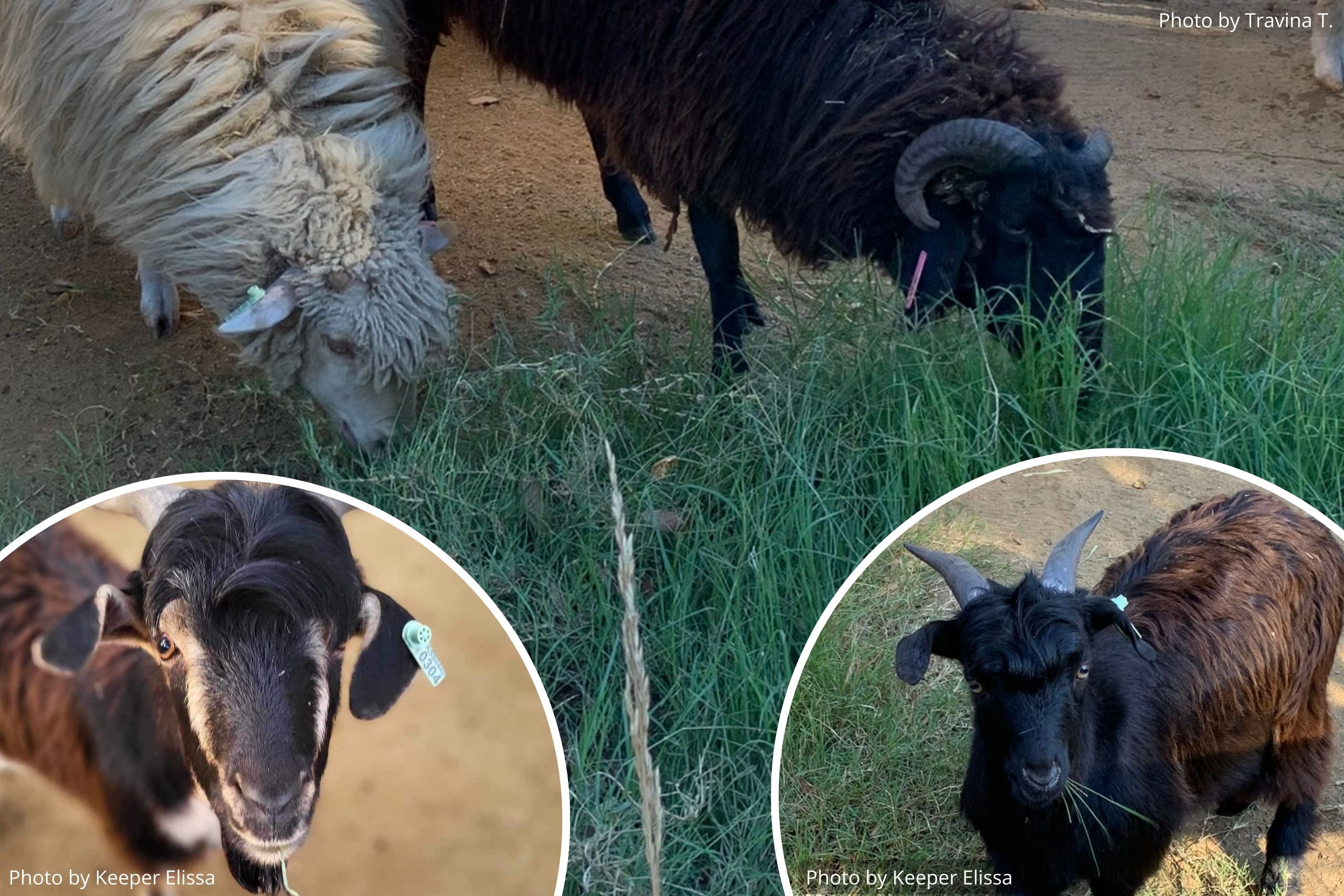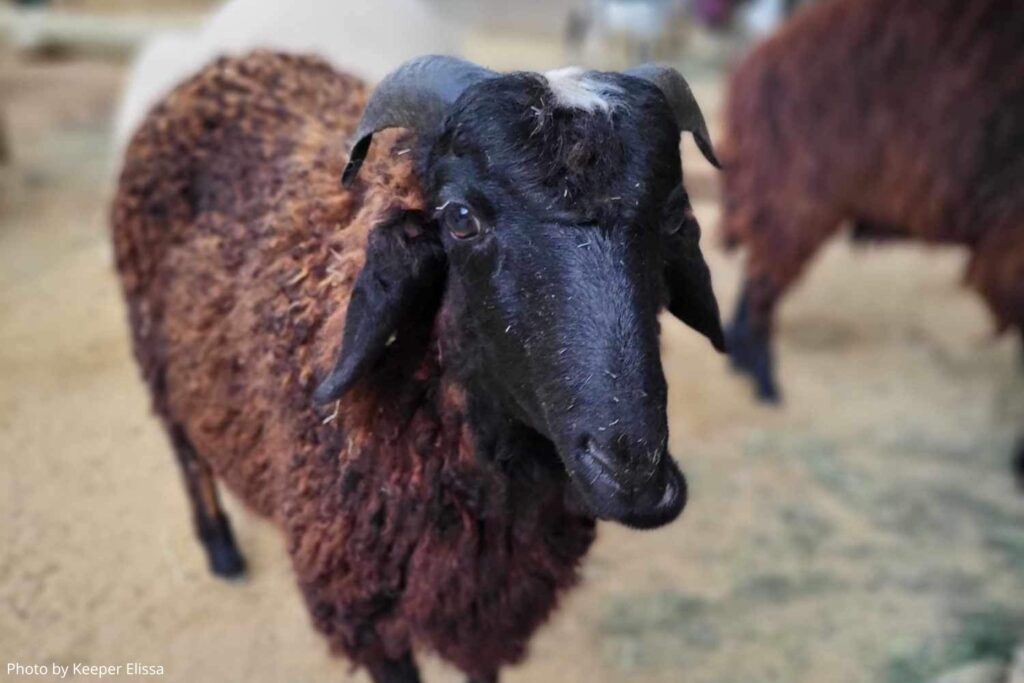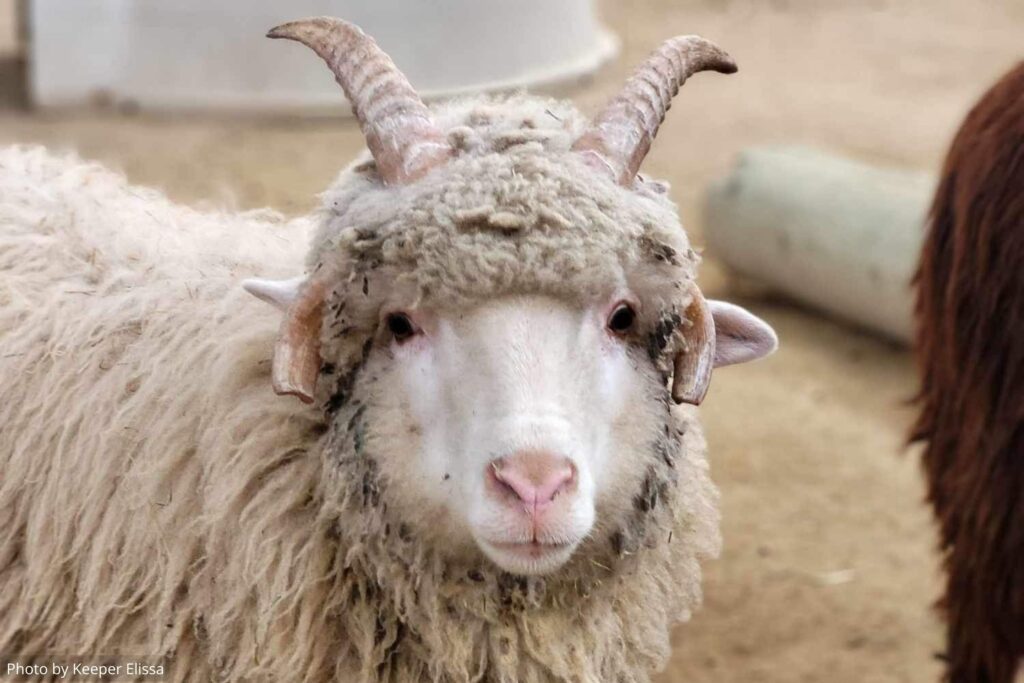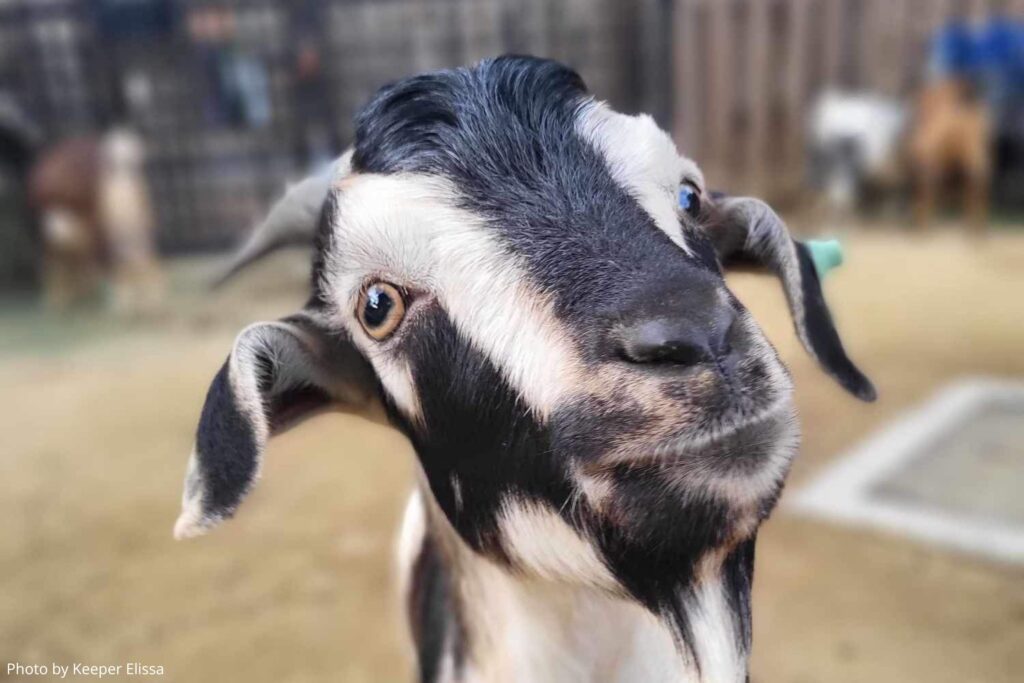
- VisitSupport Happy HollowDONATE TODAYExploreSupport Happy HollowDONATE TODAYLearnSupport Happy HollowDONATE TODAYSupport
-
Today's Hours: 10:00 am to 4:00 pm
Happy Hollow Blog
Welcome to the Flock! Happy Hollow Park & Zoo Welcomes Rare and Heritage Breed Goats and Sheep.
December 20, 2023

Happy Hollow Park & Zoo is excited to announce the arrival of three new rare and heritage breeds of goats and sheep to Double-H Ranch. Two Karakul sheep, four Navajo-Churro sheep, and three Arapawa Island goats have joined Happy Hollow’s current Nubian goat and Nigerian dwarf goats. The entire flock can be seen in the Contact Yard or main goat yard next to The Barn daily when the park and zoo is open.
Heritage livestock breeds have a long and rich history, having been bred over time for traits advantageous to their local environment. They are well-adaptable to their surroundings and more resistant to diseases than many modern agricultural species, showcasing a remarkable resilience that contributes to their overall health, longevity and the ability to thrive in pasture settings.
While their status as heritage breeds is based on their history and not their population, each of these three breeds is also considered a rare breed prioritized for conservation by The Livestock Conservancy based on the current number of individuals. To achieve this status, the breeds must have been established and continuously breeding in the U.S. since at least 1925, be a true genetic breed (reproduce the breed type when two individuals of the breed are mated together) and meet numerical guidelines for low levels of annual registrations and estimated global population. Happy Hollow is proud to provide homes for and educate about these unique breeds. Rare farm animals hold incredible variety and biodiversity that contributes to the health of future agriculture and plays a vital part in ensuring the food security of our planet. Many breeds hold a cultural significance as well, such as the Navajo-Churro sheep (read more below).

Karakul Sheep
Karakul sheep originated in Central Asia and take their name from the village of Kara Kul, in the Bokhara region between Turkmenistan and Afghanistan near the Caspian and Black Seas. The breed was imported to the United States between 1909 and 1929 with the purpose of establishing a pelt industry, but the effort was unsuccessful and the breed remains relatively rare. Karakul sheep have a long, lustrous outer coat and a fine, soft inner coat, and the fleece has a low grease content that makes it excellent for spinning and felting. Karakul sheep can often be identified by their distinct tails, leading to their nickname as one of the “fat-tailed sheep” breeds. Karakul’s store fat deposits at the base of their tail and along the first three vertebrae, making their tails broader and fluffier than many other breeds. The population of Karakul sheep in North America is genetically divergent from those in Central Asia, allowing them to be classified as a separate breed known as the American Karakul.

Navajo-Churro Sheep
Navajo-Churro sheep are considered the first domestic sheep breed developed in North America. They can have two, four, or even up to six horns, and have double coated fleece (a finer inner layer and courser outer layer) that can be spun directly from the raw fleece, without washing or carding. Descended from the Churra sheep brought to the continent in the 1540’s by Spanish conquerors and colonizers, the breed is a result of selective breeding by Native American and Hispanic people living in the varied environment of the Colorado Plateau. Following the 1680 revolt against Spanish oppression, the Navajo people expanded their flocks on their vast traditional homeland where the sheep thrived on excellent forage. These sheep are known to the Navajo as Dibé dits’ozí, meaning “long fleeced sheep,” or T’áá Dibé, meaning “the first sheep.” Sheep are intertwined with Navajo philosophy and spirituality, and for centuries provided economic self-sufficiency through trade of fiber, milk and meat products. Conservation of the Navajo-Churro is vital not just for the preservation of the breed, but to ensure the continuance of the Navajo pastoral way of life.

Arapawa Island Goats
Arapawa Island goats are named for a rugged island at the top of the South Island of New Zealand, where the ancestors of the breed were introduced by European explorers as early as the 1600s. While DNA evidence indicates that they may be distantly related to breeds from South Africa, Arapawa Island goats have a unique genetic identity. These goats roamed free on the island until the 1970s, when the New Zealand Forest Service determined that they were damaging to the native forest and needed to be removed. Conservation efforts led by Arapawa Island residents returned the goats to domestication and established a breeding program to maintain the breed. These goats remain one of the rarest breeds worldwide, with only 150-200 individuals in the U.S. (representing about half the global population).

Happy Hollow visitors can have an up-close encounter with the zoo’s goats and sheep at the Contact Yard located in the Zoo on the Hill. Please note that not all animals may be in the Contact Yard on a given day, based on behavior, health and/or rest days. See up to date park and zoo hours and plan your visit at happyhollow.org/visit.
Sources
- The Livestock Conservancy. (2023, September 13). https://livestockconservancy.org/